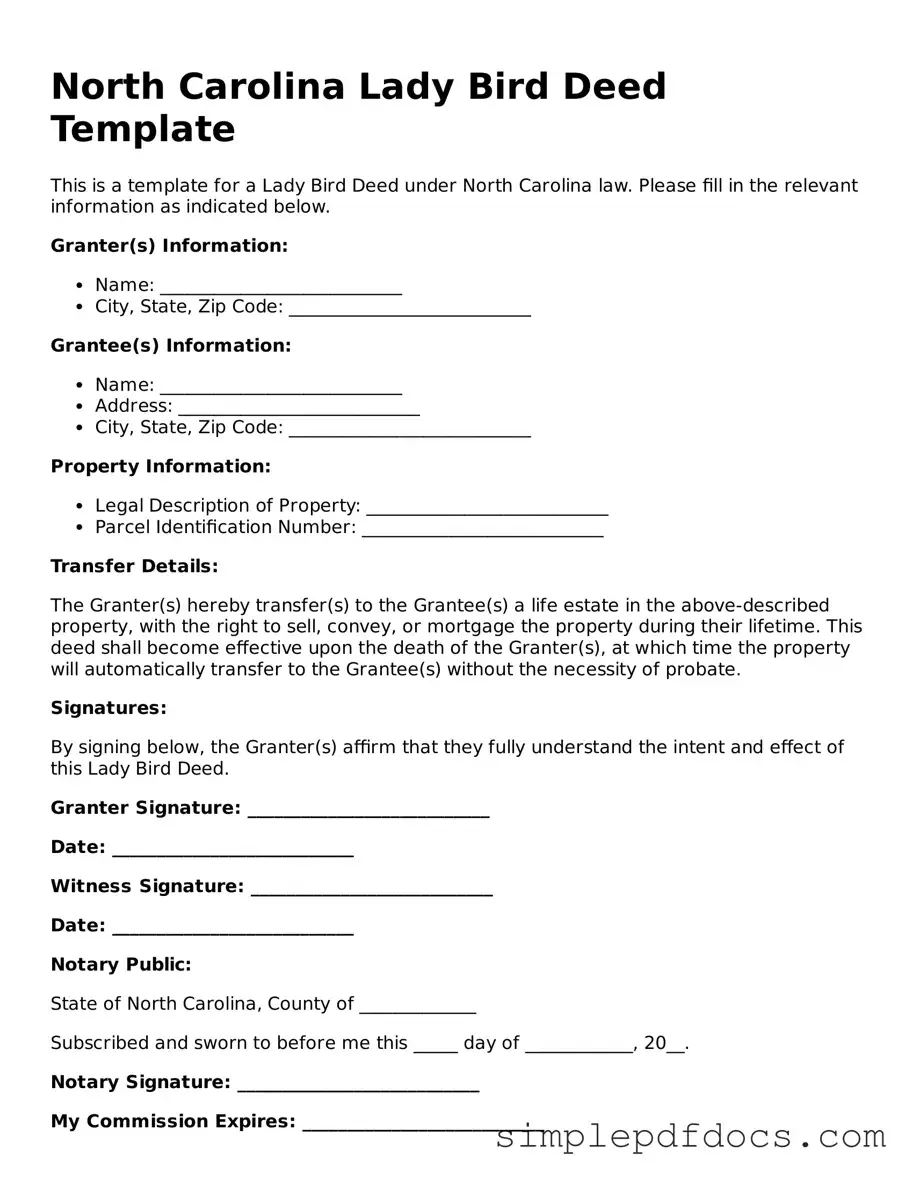The North Carolina Lady Bird Deed form serves as a powerful estate planning tool, designed to facilitate the seamless transfer of property while allowing the original owner to maintain control during their lifetime. This unique deed enables property owners to transfer their real estate to their beneficiaries without the need for probate, thereby simplifying the process and potentially saving time and money. One of the standout features of the Lady Bird Deed is its ability to grant the owner the right to sell, use, or change the property at any time, ensuring that they retain full control until their passing. Additionally, this form can help protect the property from creditors, making it an attractive option for those looking to safeguard their assets. The Lady Bird Deed is particularly beneficial for married couples, as it allows for the transfer of property to the surviving spouse without the complexities often associated with traditional wills. Understanding the nuances of this form is essential for anyone considering it as part of their estate planning strategy, as it can offer peace of mind and clarity in an often complicated process.
